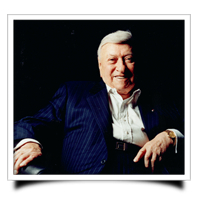 With Michel Thomas’ passing on January 8, 2005, the world lost one of the best language learners and teachers to ever live. And live he did. Born to wealthy Jewish factory owners in Poland, Michel (born Moniek Kroskof) was sent to live in Germany when growing antisemitism began to limit his opportunities at home. He later studied in France and Austria, but as history shows, none of these countries were safe from the spread of Nazism. Michel joined the French Resistance (at which time he changed his name), but was later caught and interned by the Nazis. After surviving not just one, but multiple Nazi concentration camps, he went on to work with the U.S. Army Counter Intelligence Corps to fight his former captors, a duty for which he was awarded the Silver Star in 2004. Just as the awful reality of internment led Viktor Frankl to uncover the true human power, so too it did for Michel, who states:
With Michel Thomas’ passing on January 8, 2005, the world lost one of the best language learners and teachers to ever live. And live he did. Born to wealthy Jewish factory owners in Poland, Michel (born Moniek Kroskof) was sent to live in Germany when growing antisemitism began to limit his opportunities at home. He later studied in France and Austria, but as history shows, none of these countries were safe from the spread of Nazism. Michel joined the French Resistance (at which time he changed his name), but was later caught and interned by the Nazis. After surviving not just one, but multiple Nazi concentration camps, he went on to work with the U.S. Army Counter Intelligence Corps to fight his former captors, a duty for which he was awarded the Silver Star in 2004. Just as the awful reality of internment led Viktor Frankl to uncover the true human power, so too it did for Michel, who states:
“I concentrated so hard that I stopped feeling pain.”
“I contemplated the untapped reserves of the human mind. The great hidden depths of the brain. I learned from it.”
After World War II, Michel moved to Los Angeles where he began a language school, continuing to refine his language teaching approach. Given his location and growing reputation for fast and effective language teaching, he went on to teach many Hollywood stars, including Woody Allen, Sofia Loren, Emma Thompson, Doris Day, Barbara Streisand, and Mel Gibson. But his star-studded résumé is not what impresses me; it is his inspired attitude toward learning that earns my respect:
“Learning should be excitement. Learning should be pleasure. And one should experience a constant sense of progression. And one would want more. That is learning to me. And a teacher is somebody who will facilitate and show how to learn.”
How the Michel Thomas Method Works
If you visit the Michel Thomas Method website, you will see a simple, only mildly marketing-esque slogan:
“No books. No writing. No memorising. Just confidence fast.”
This sums up the method fairly well. Much like the Pimsleur Approach, the Michel Thomas Method is completely audio-based. The learner is encouraged not to overtly memorize words and phrases; the brain should automatically internalize them if the teacher (in this case Michel) breaks the language down into sufficiently small chunks and then puts them back together in a sufficiently intuitive, logical, step-by-step approach. And that is exactly what The Michel Thomas Approach promises.
The Good
There is a lot to like about the Michel Thomas Method:
Michel Thomas is a Master Teacher
Having taught languages myself for a number of years, I know a good teacher when I see (or rather hear) one. Michel does a brilliant job of presenting languages in an intuitive, step-by-step, build-repeat-build-repeat method that quickly leads to retention and intuitive mastery.
Just Enough Grammar
If you have read my other articles, you know that I am not a big fan of extensive grammar study. Many learners spend all (or most) of their time learning rules about the language but are unable to actually apply them in real-time communication. This is because grammar study leads to declarative memory, not procedural memory (the kind that is needed to understand and use a language). That said, I do think a little grammar knowledge can be useful, and Michel Thomas is very good at providing useful grammar lessons without boring or distracting the learner, bite-sized tips that help you guess your way through the language before you have received enough exposure to intuit patterns at a more sub-conscious level.
Proper Pronunciation is Stressed Above all Else
As I often say, “Pronunciation trumps grammar”. Proper syntax is obviously important, but you will be more easily understood if you pronounce things correctly with broken grammar, than perfect grammar pronounced with a strong, improperly stressed accent. In the Spanish program for example, Michel points out how important it is to “push down” on the right part of certain Spanish words to be understood by native speakers.
Overly Technical Grammatical Terms are Avoided
As you saw in the last point, Michel uses the concept of “push down” instead of talking about “word stress”. Even as a linguist familiar with linguistic jargon, I much prefer his more tangible, approachable wording.
Sufficient Repetition Without Stagnation
While the Michel Thomas Method doesn’t use a formulaic spaced repetition schedule like Pimsleur’s “Graduated Interval Recall”, you will find that the courses offer enough repetition to really hit home the words you hear without boring you to death.
Learning Alongside Others Builds Confidence
Though I was initially skeptical of this part of the course, I think it can be greatly encouraging to new learners (especially those who have never learned any foreign languages). Often times, you may find that you know the answer even when the learners on the CD don’t. This can be very encouraging, helping give you the extra psychological juice you need to keep going. But don’t let it go to your head: if we were being recorded, we’d likely make just as many mistakes!
More Affordable than Pimsleur and Rosetta Stone
Michel Thomas pricing is as follows but you can often buy them for much less on Amazon.
- Start Courses: $15
- Total Courses: $130
- Perfect Courses: $130
- Master Classes: $75
Available for Most Major Languages
The following Michel Thomas courses are currently available:
Now Available in iOS App Form
For those wanting to learn using 21st century tools, there is now a free Michel Thomas Method app for the iPod touch, iPhone, and iPad. Though the app and one lesson is free, you have to buy subsequent lessons via in-app purchases. This can actually be a benefit since you can pay as you go instead of shelling out money for the whole shebang at once.
| Download the App |
The Bad
Even the best course has its downsides. Here are few elements of the Michel Thomas Method that I don’t care for:
Other Learners Can Slow Things Down
Although I liked learning Spanish alongside the other beginner students, it was sometimes a bit annoying when I was ready to move on and they were still struggling to get things right. This is one of the same reasons I don’t usually like taking formal classes: they move as fast as the slowest student.
Audio Only Has its Limitations
While I like the fact that course gets your ears and mouth used to the language first (many learners start with and get trapped in the written language), it would be nice to be able to go back later (only after completing each course) and see the words and phrases written out. Listening and speaking are definitely the foundation of a language, and Michel is right to prioritize them, but most learners will want to read and write the language as well. To help foster reading skills but without going against the method, perhaps the words and phrases from the course could be used in a fun, fictional story that reinforces what has been learned without trying to present them in a traditional, dry approach.
Cost is Prohibitive for Some
Although I think the courses are reasonably priced, especially alongside the inflated prices of Rosetta Stone, I know many learners who will have a hard time laying out the cash for these courses even at the steep discounts offered on Amazon.
Lots of Time Spent in English
Given how the method works, this is an inevitable downside, but it is a downside nonetheless. I have this same criticism of many language programs, courses, and classes, in fact, but unlike most courses, the positive results of the Michel Thomas Method far outweigh this limitation.
My Verdict
If you can afford the course or get a copy from your local library, I highly recommend using the courses for your target language or languages. I discovered his method far too late in my language learning journey and only wish I could go back in time and give myself this course.
The Language Master, BBC Documentary
The documentary shows Michel in action, teaching French to a group of British high school students who had either no previous exposure to French, or who had tried and failed. You will also learn more background about his experiences in World War II, and his failed attempts to get his method used in public schools and universities.
More than Words – The life and Work of Michel Thomas
Here is another documentary about Michel Thomas brought to my attention by a Language Mastery reader (thank you, Acutia!) It is audio only, but I think you will find it quite moving even without the visual component.
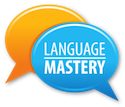
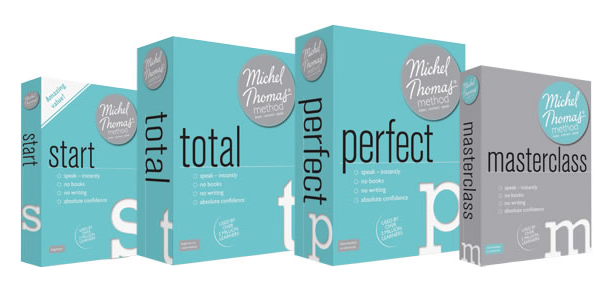
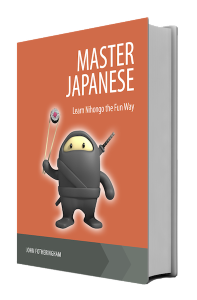
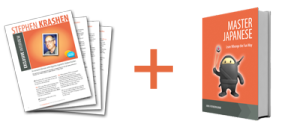
“Other learners can slow things down.” That was my only issue with the Russian edition of the Michel Thomas method: the other students could be somewhat dim. So many times I wanted to shout, “No you idiot! You’ve been corrected a thousand times, why can’t you remember?!?” But then I’d only be shouting at myself.
While it is an audio-only program, I found myself taking notes nonetheless because if I forgot anything or wanted to review something, I would have to scan through hours of materials to find what I was looking for. Otherwise, these CDs make for a really good (but expensive!) introduction to any language.
Ha! Yes, I had the same experience. If you watch the Language Master documentary, you can actually see one of the students in the video getting really frustrated when another student doesn’t know the answer and she does.
Thanks for the article John. I ran across Michel Thomas’ name a few years ago. I seem to remember that a week of language learning with him was about US$30,000. His school cost about $6,000 a week. At the time, I remember thinking that anyone charging those numbers needs to know something about learning languages. Ever since, I’ve been intrigued about what he did that was so different in his teaching methods, but have never had the time to look into it further.
With your review I think it may be one of the next softwares I try out. I’m currently working throw Pimsleur Italian and am enjoying the style, although since I speak Spanish and Portuguese, I too, am a little bored at times about how slow it goes. I just finished a 30-minute lesson on numbers 1-13 and how to say “at X o’clock”. It was about 20 minutes too long for me.
Thanks for taking the time to do the review.
Jared
I know exactly what you mean about Pimsleur; I went through Russian 1 a few years back, and through I find it effective, it was a bit tedious. For future languages, I will definitely use Michel Thomas materials if available.
So you see the Michel Thomas materials as better than the Pimsleur?
Better for me, yes. Better for everyone, not necessarily. If people have the means (or access at their local library) I suggest trying both and seeing which works better for you.
Nice review John. I liked that you included something about his life. If you are curious to know more I’ve uploaded an excellent BBC documentary on him from a few years back. It’s less about his language teaching than the more tragic aspects of his life, before he moved to the US.
http://ifile.it/4xb1rq3 (Links to a zip file containing an mp3 & text file.)
Thank you for your kind feedback and the link to the documentary. Do you know if the doc is available on YouTube or other streaming sites? I avoid downloading media files as general rule to avoid potential viruses. To those visiting the link, beware that the iFile site tends to have spammy pop-ups so it’s a good idea to have the “Block Pop-Ups” setting enabled first in your browser.
No. As far I know it’s not available on YT or to stream. I got it on a free to air radio torrent tracker. The zip file is one I uploaded myself. I’m 100% sure there’s no viruses in the mp3 or the text file but you don’t know me from Adam so you probably won’t take my word on that. I considered uploading it to YT but thought the fileshare link would be more straightforward. I forgot about ifile’s popups and ads; I’ve automatically blocked such ads for so long I forgot what it’s like to deal with them. If I have time I’ll look into another method – maybe soundcloud or audioboo.
Okay, for my good Samaritan deed of the day, I’ve uploaded the audio in 3 parts to Youtube. If you like it, feel free to embed it above. Part 1: http://youtu.be/mWecqzopwXA
That’s great! Thank you for your good deed; good karma is on the way!
I learnt most of my Japanese grammar from Michel Thomas CDs and I’ve had a strong foundation in grammar ever since, as well as great pronunciation (not that Japanese is very hard in that regard). I think using Michel Thomas for grammar first, and then supplementing it with a nice grammar textbook that can be sampled in bite-size chunks is a good idea. The grammar textbook then becomes less about learning grammar, as it does about understanding it, and rather than presenting a flood of rules that cloud your brain, becomes a great collection of “AhHAHH~” moments.